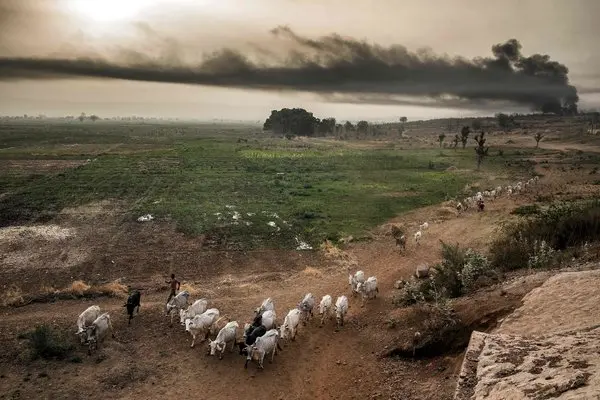Despite the fact that food security is a fundamental component of global stability, the global food systems continue to be susceptible to disruption. Agriculture, supply channels, and trade networks would be subjected to significant pressure in the event of a large-scale global conflict, which could potentially disrupt the delicate equilibrium that sustains billions. It is imperative to comprehend the potential effects of conflict on food production and distribution in order to adequately prepare for one of the most pressing hazards of global conflict: the pervasive collapse of the food system.
Reasons for the Susceptibility of Food Systems to War
Today’s food systems are significantly dependent on interconnected global networks:
* **International Trade:** Numerous specialized inputs are required for food production, including seeds, equipment, transportation, and storage, among others. * **Complex Supply Chains:** Numerous countries rely on imports for essentials such as wheat, maize, rice, and fertilizers.
* **Labor and Infrastructure:** Conflict poses a threat to the skilled labor and functioning infrastructure that are essential components of farming. * **Energy Dependence:** Agriculture is energy-intensive, relying on fuel for machinery and transportation, as well as electricity for processing and refrigeration.
The entire system can be affected by disruptions in any link.
Key Risks in a Global Conflict
1. **Sanctions and Trade Blockades**
Economic sanctions and blockades that impede the movement of agricultural inputs and food are probable components of a global conflict. Countries that are unable to import may experience severe shortages.
2. **Degradation of Agricultural Lands**
Local food production could be significantly reduced in combat zones due to the destruction of farmland by conflict, bombardment, or occupation.
3. **Deficits in Fuel and Fertilizer**
the cost and availability of petroleum and fertilizers, which are essential for modern agricultural yields, would increase due to war-induced energy shortages.
4. **Labor Disruptions**
The availability of agricultural labor may be diminished as a result of military conscription, displacement, and safety concerns, which could affect the timing of planting and harvesting.
5. **Transportation and Logistics Incidents**
Delays or halts in the movement of food supplies can result from damage to ports, roads, and transport networks, even if production remains stable in other regions, resulting in localized scarcities.
Potential Consequences
* **Increased Food Prices:** The combination of panic purchasing and supply disruptions could result in significant price increases, rendering fundamental nutrition unaffordable for vulnerable populations.
* **Famine and Malnutrition:** In the most severe scenarios, food shortages could result in famine, particularly in regions that are already grappling with poverty or climate stress.
* **Political Instability:** Food insecurity frequently contributes to social unrest, protests, and conflict, which may exacerbate the instability of war.
* **Mass Migration:** The flow of refugees may be influenced by scarcity, as individuals seek sustenance and safety in other regions, thereby putting additional strain on neighboring regions.
Strategies and Lessons for Building Resilience
Despite the significant risks associated with global war, it is possible to mitigate the collapse of the agricultural system by taking steps:
* **Food Source Diversification:** By promoting local production and decreasing dependence on a single import source, disruptions can be mitigated.
* **Strategic Food Reserves:** In order to bridge short-term shortages, governments can maintain reserves of staple foods and critical inputs. * **Investing in Sustainable Agriculture:** Practices that reduce energy and input dependency enhance resilience. * **Strengthening Supply Chain Infrastructure:** The protection of key transport and storage facilities supports the flow of goods during periods of stress.
* **International Cooperation:** The negotiation of humanitarian corridors and trade exceptions can save lives, even in the face of conflict.
Conclusion: Global Conflict’s High Stakes for Food Security
Millions could be at risk of starvation and instability as a result of a catastrophic collapse in the global food system that could be precipitated by a Third World War. The outcome will be influenced by the scope and duration of the conflict; however, the interconnectedness of modern agriculture necessitates preparedness.
It is not merely a matter of economic interest to ensure the resilience of agricultural systems; it is a critical element of human survival and global peace. In an uncertain future, the distinction between pervasive crisis and managed disruption could be determined by recognizing the risks and investing in solutions now.

Leave a Reply